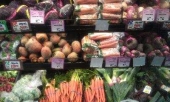




Our inability to change everything should not stop us from changing what we can.
 1
1













Our inability to change everything should not stop us from changing what we can.








Our projects:
in Portugal, sheltered terraces facing eastwards, high water table, uphill original forest of pines, oaks and chestnuts. 2000m2
in Iceland: converted flat lawn, compacted poor soil, cold, windy, humid climate, cold, short summer. 50m2
 1
1




Robert Ray wrote: Just curious as to where everyone else is as far as food production for themselves.

Steven Kraft wrote:I think it would be a great deal more helpful if people would give a small introduction with the following information, for their posts:
- Size of plot
Steven Kraft wrote:- Location
Steven Kraft wrote:- Number of years actively engaged in food production








Robert Ray wrote: Just curious as to where everyone else is as far as food production for themselves.

|
My previous laptop never exploded like that. Read this tiny ad while I sweep up the shards.
The new gardening playing cards kickstarter is now live!
https://www.kickstarter.com/projects/paulwheaton/garden-cards
|






